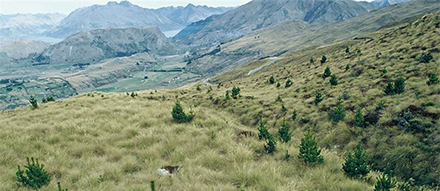New Zealand Forest owners welcome the Parliamentary Commissioner for the Environment’s (PCE) acknowledgement that the presence of wilding conifers across New Zealand is largely a legacy issue, but caution against placing costs on foresters who are already investing in wilding control. Source: Timberbiz
In his address to the Wilding Pines Conference in Queenstown, PCE Simon Upton highlighted the need for ongoing investment into the control of pest plants, including wilding conifers. He noted that the wilding issue is tied back to historical government policy settings and activities around forest planting strategies and goals such as erosion control.
Forest Owners Association (FOA) chief executive, Dr Elizabeth Heeg, says the statement confirmed that the wilding issue isn’t solely the result of forestry activities.
“There is a widespread misconception that contemporary commercial plantation forestry blocks are responsible for the invasive spread of wilding species,” Ms Heeg said. “Contemporary plantation foresters often shoulder the blame for wilding spread when we know it is predominantly due to historical policy decisions and legacy plantings used for farm shelter belts and the likes.
“These legacy species, such as lodgepole pine, disperse seeds more easily and can rapidly invade and cause dense forests.
“Although Douglas fir is a problem in some areas, plantings are generally well managed by the industry, and other prominent wilding species are no longer used in contemporary plantations.
“The sector has advanced its knowledge of these risks significantly in recent years and carefully manages plantation forests to minimise the risk of spreading species beyond boundaries.”
Planting behaviour has changed significantly since the implementation of the National Environmental Standard for Plantation Forestry (the NES-PF) and the wilding risk calculator in 2017.
The risk of wilding spread is expected to reduce even further with the new National Environmental Standard for Commercial Forestry (NES-CF), which also captures carbon forestry. All plantings greater than one hectare are now captured by wilding risk calculations.
“Foresters take their obligations in managing these risks, and being a responsible landowner, very seriously. All are bound by the NES-CF, and the majority do the right thing by working with neighbours and the community,” Mr Heeg said.
“Where there is spread, the residual risk is managed with surrounding landowners, to the extent that many foresters are voluntarily controlling legacy problems on neighbouring properties.”
Ms Heeg says the sector is concerned that foresters will continue to shoulder the blame and the cost for the spread of legacy species.
“Many forestry companies voluntarily invest a significant amount of their time and money into proactively controlling the spread of wilding species each year,” she said.
“Penalising the sector for its control efforts to date by way of a levy, as suggested by PCE Simon Upton, is not the solution; nor are attempts to correlate current wilding conifer spread to contemporary plantation forestry.”
It is critical that funding for the wilding control programme continues so that the progress made in recent years can be maintained. However, the cost of this work shouldn’t rely – or fall solely on forestry, Ms Heeg says.
“The sector would strongly advocate for greater Crown funding to ensure the wilding species programme continues to achieve its objectives, while acknowledging that the current wilding conifer issue is largely a result of historical policy decisions and non-plantation sources,” she said.
“Technologies such as gene editing and remote sensing could offer a major step forward for preventing and managing the spread of wilding conifers; but ultimately, combatting wilding spread will require ongoing collaboration from all and the government to take an active, lead role.”






